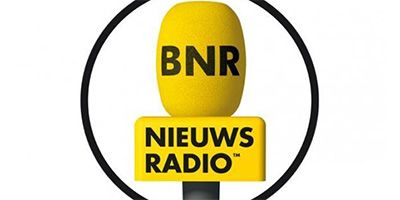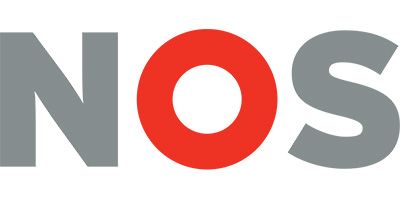
Anyone involved in retail shelf arrangement is familiar with them: the so-called Customer Decision Trees. There are also similar concepts under the names Shopper Decision Tree and Consumer Decision Tree. In short, decision trees are popular in retail and have traditionally been the basis for shelf arrangement.
The decision tree models share the idea that they view the decision-making process as a step-by-step hierarchical process. First, you decide whether you want porridge, cornflakes, or crackers for breakfast (porridge!). Then you choose the grain type (oats!) and finally the brand (Quaker!). Sounds logical – until you investigate how customers actually make choices in the store.
In recent years, the validity of these decision trees has increasingly been questioned. Thanks to psychological and neuroscientific research, we now better understand how consumers truly make their choices. It turns out that hardly any step-by-step decisions are made. Most of our purchasing decisions occur automatically and unconsciously. The Quaker ends up in the shopping basket faster than you can say porridge.
Strictly speaking, very few decisions are actually made in the store, and especially with FMCG products, the autopilot is continuously in control. What does this unconscious buying behaviour mean for the customer decision tree and the research into it? In this blog, we dissect the answer.
Trouwens, laatst gaven we een - gratis - lunch-webinar precies hierover. In dit webinar bespraken Tim en Tom de zin en onzin van Customer Decision Trees en onthulden ze hoe je het keuzeproces van de shopper meetbaar maakt.
Aangezien je dit blog leest, dachten we dat je deze webinar helemaal mooi zal vinden! Terugkijken kan heel simpel via deze link. Ik ben benieuwd wat je ervan vond!
The Customer Decision Tree Doesn't Exist… But Hold Off on Cutting It Down
At Unravel Research, we conduct dozens of eye tracking studies in retail environments annually. Shoppers wear a comfortable eye tracking headset, allowing us to precisely follow where the shopper looks, what information is processed (and especially what information plays no role at all), and what comparisons are made in the purchasing process.
Even the most seasoned eye tracking researcher is regularly surprised by how little information is actually used when making choices. The step between looking and buying often takes less than a second.
This intuitive decision-making process is difficult to reconcile with a rational decision tree model where the shopper mentally works through a checklist to reach a purchase decision. Retailers know this too: even the most conservative decision tree enthusiast understands after some self-reflection that customers do not actually choose in that way.
The decision tree thus serves more as a simplified representation of the most distinctive product features (at the top of the tree) to the more specific product features (at the bottom of the tree). This provides guidance on how to arrange your shelf segments in a customer-friendly manner. Is it more effective to place products in brand blocks (a Milka block and a Verkade block) or by chocolate type (a milk block and a dark block)? When you know which choice factor is most used by customers, you can cleverly arrange the shelf.
The Brain Wants to Eliminate Options
Our brain is lazy. In a retail context, this means we want to buy a product that makes us happy with as little walking and thinking as possible. An ideal shelf allows our brain to quickly eliminate irrelevant segments.
When someone approaches the chocolate shelf to buy a Milka bar, it's helpful if the products are arranged by brand. After all, the brain can then immediately ignore everything that isn't purple. If the shelf were arranged by chocolate types, the shopper would have to traverse significantly more distance to locate the Milkas (and thus be able to eliminate less).
In this respect, the decision tree is still a helpful metaphor for the major and minor distinguishing features on which you can arrange a shelf in a brain-friendly way. But don't lose sight of the fact that it's just a metaphor, not a reflection of how we actually choose.
Research into the Customer Decision Tree
That the customer decision tree is not a particularly good reflection of the decision-making process in our brain is not really a problem. After all, the model still provides guidance for shelf arrangement. The challenge is mainly to dissect through research which choice factors truly play a role in the store (and thus belong 'high in the tree') and which are of secondary importance.
Gratis Webinar: "De Zin en Onzin van Customer Decision Trees 🧠"
Iedereen die zich in de retailwereld bezighoudt met schapinrichting kent ze wel: de zogenaamde Customer Decision Trees (CDT). Maar past zo’n rationeel beslissingsmodel wel bij de hedendaagse kennis over het onbewuste? Is de houdbaarheidsdatum van de CDT niet allang verstreken?
Tijdens dit webinar leer je:
👉 Waarom de CDT onrealistisch maar toch waardevol is
👉 Hoe we werkelijk kiezen
👉 Hoe je het keuzeproces meetbaar maakt
De 60 minuten durende webinar is nu terug te kijken!
Bekijk de webinar via deze link <
The Problem with Traditional Research into the Customer Decision Tree
Many traditional research forms into the customer decision tree are based on consciously questioning the decision-making process, or sorting tasks where the respondent must create clusters of related products.
All these methods suffer from the problem that they make respondents think extraordinarily consciously and rationally about their decision-making process. And that is precisely not the mindset we have in the store.
The result is that these research forms underestimate the importance of some choice factors, for example when respondents present themselves as less brand-sensitive than they actually are. Conversely, some choice factors can be significantly overvalued. The respondent may indicate that nutritional information, freshness, or an organic origin is of great importance to them, while in reality, they don't consider these factors for a second in the store.
The customer decision tree can therefore remain, but we need other methods to colour it in.
Neuromarketing Alternatives for Research into the Customer Decision Tree
The only place where you can measure the actual decision-making processes of the customer is the store itself. Thanks to neuromarketing research with eye tracking, this is now possible.
In a neuro customer decision tree study, shoppers make purchases in a category while an eye tracker meticulously records their entire decision-making process. Every fixation is logged. This applies to both specific product comparison (on taste, colour, packaging material, size) and product information (price, sugar content, etc). By overlaying this data from multiple respondents, we gain insight into two crucial dimensions:
- Which choice factors come into play early and late in the decision-making process
- Which choice factors are used by many and few shoppers

By plotting this in a grid, four quadrants emerge. The factors in the top left quadrant are by far the most important for shelf arrangement: these are used by many shoppers early in the decision-making process. And these are exactly the factors on which you want to arrange the major segment differences on the shelf, making it as easy as possible for the customer.
The factors in the top left quadrant are the primary shelf segments to focus on, or in other words: the factors we used to label as 'high in the decision tree'. At the same time, this neuromarketing method provides a clarifying picture of the actual decision-making process. You see that people do not follow a rational step-by-step decision-making process, but simply that many people use a small number of factors to arrive at their decision-making process.






